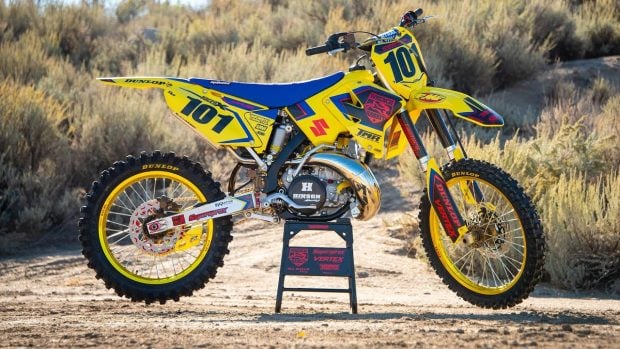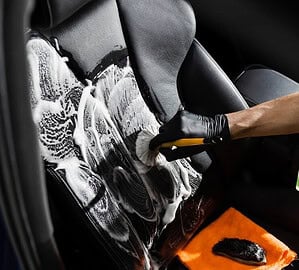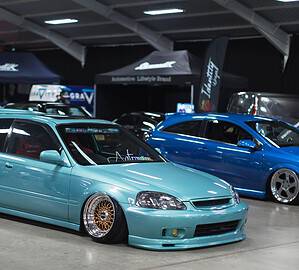The Suzuki RM250 is probably the most iconic dirtbike of all time, literally responsible for the motocross craze in the 1970s. And the legend didn’t stop there — it won multiple AMA Supercross and Motorcross Championships, and it was also the last two-stroke motorbike to do so. As a result, the RM250 is now widely regarded as the best two-stroke off-roading bike ever made.
To commemorate the myth, I’ll dive into its rich history and tell you why you should consider owning one, despite the fact that it’s not getting any younger. Sure, these bikes are quite old by now, but two-stroke motorcycles still provide a more enjoyable experience on dirt roads. They are also rather easy to work on, thanks to the simple mechanics, a crucial feature in a dirt bike since you’ll be thrashing it day in and day out. In that case, I also recommend getting your hands on a Suzuki RM250 repair manual providing repair procedures and torque specs, making any job much easier — and much more affordable in the long run.
With that said, let’s dive into it!

Suzuki RM250’s Rich History
As mentioned above, the Suzuki RM250 dates back to the 1970s. The Japanese giant had long been working to produce the ultimate off-roading machine in the 250cc segment and finally came up with the Suzuki RM250A in 1976. It was a significant upgrade from the TM250, thanks to a more efficient engine and a long-travel suspension that set new standards in the category.
However, competition in the 250cc category was testing manufacturers. Honda and Yamaha’s intense R&D pushed Suzuki to release three new iterations of the RM250 in only two years, dubbed the RM250B, RM250C, and RM250CII.
Still, with the rapid advancements in the motorbike industry, Suzuki had to massively step up its game with the following models. In 1981, Suzuki offered the RM250 with a Full Floater suspension, vastly superior to the single-shock design used by other manufacturers.
At this point, Suzuki was already dominating the market, and people loved how the Full Floater design absorbed bumps. At this point, everyone thought Suzuki was done innovating for the time being and would come up with only minor changes in the subsequent models — but they were dead wrong.
Indeed, the 1982 RM250 took the dirt bike industry by storm with a modified and liquid-cooled 250cc mill. The ’81 RM250 had a bore of 67mm and a stroke of 70 mm, changed to a 70 mm bore and 64 mm stroke in the ’82 model, significantly improving power feedback at lower revs.
From here on, the RM250 got minor updates, like a redesigned framework and new power valves, until 1989, when it finally received another top-to-bottom makeover. The upgraded bike used a case-reed motor and an inverted fork.
Fast forward to 2001, the model featured a more streamlined bodywork, an external water pump, and a new power valve.
Finally, in 2008, the last iteration of the RM250 marked the end of the motorbike’s historic 32-year run as one of the best motocross in history.
Should You Buy a Suzuki RM250?
The Suzuki RM250 is undoubtedly an excellent dirt bike, especially for hardcore enthusiasts. Thanks to the outstanding driving dynamics and reliable mechanics, this motorcycle is a pleasure to own. And it can also be inexpensive, provided you have some DIY knowledge, garage space, and a Suzuki RM250 repair manual.
I also started as a novice DIYer, but after getting a bunch of digital repair manuals from eManualOnline, I can now even work on my friend’s bikes and make some money on the side. For me, it’s also part of the experience — there is joy in setting up your off-road motorcycle before going on a journey.
With that said, I recently tested a 2008 model in the dusty and hilly terrain of Colorado and was still in awe of the performance of its 14-year-old engine. The throttle response is instant when you start climbing a slope, with the 2-stroke quickly building up revs. Unlike 4-stroke engines, these motors pull better at higher rpm and are much more responsive, which is essential when off-roading.
Combine all that with a strong mid-range, and you have a motorbike that can exit tight, slow corners in second gear but then almost immediately accelerate to clear a double jump without needing to shift. But even then, if you need to, the slick-shifting transmission is buttery smooth and changes effortlessly.
The RM250’s unmatched off-roading prowess is further complimented by its handling. The straight-line stability, quick turning ability, and smooth fork action make it one the best in the business. Furthermore, the suspension with 12.2 inches of wheel travel front and rear swallows unevenness on any terrain.
And although the hydraulic braking system isn’t extraordinary, it’s still efficient enough to decelerate quickly before a sharp turn.
But keeping aside the motorbike’s performance attributes, the sound of the small yet bold 250cc engine will put a smile on anyone’s face. Let me tell you, this Suzuki can scream! You can hold on to a gear and let the engine overrev, and that won’t pose much of a problem when hitting the tracks.
Overall, I would go for the RM250 any day! It is the ultimate machine for thrilling rides and quenching your adrenaline levels.
Engine Specifications
All Suzuki RM250 model’s specifications revolve around modified versions of the 250cc engine and a few design and framework changes here and there. Let’s start with the best model year — the 1982 RM250. It had a liquid-cooled 249 cc 2-stroke single-cylinder engine with 64 mm stroke, and 70 mm bore. The model relied on drum brakes, telescopic front suspension, and a 5-speed manual transmission.
Coming to more recent models, Suzuki switched back to an air-cooled 250cc engine in the 2002 version, with a 66.4 mm bore and 72 mm stroke. Drum brakes take care of the rear wheel, while the design is sleeker and more modern compared to the 1990s version.
Now, if you look at the most advanced version of the RM250, the 2008 model features an Electric CDI that significantly increases power output at low rpm. Not to forget the SHOWA inverted 47mm front forks, facilitating rebound damping and spring preload to suit different riders. The liquid cooling is back again, accompanied by a full-floating front disc brake with dual-piston calipers and rear disc brakes with single-piston calipers.
Last Words
Put simply, the Suzuki RM250 is a legend — at least, in my book, it is — thanks to a combination of characteristics that are hard to beat. Even today, I can wholeheartedly recommend it to fellow riders! Nonetheless, since you’ll obviously be buying a used motorcycle, regular maintenance and timely repairs will be necessary. Luckily, you can do all that cheaply with a set of tools and a Suzuki EM250 manual.
Of course, there are also other great off-road motorcycles out there, including Suzuki’s smaller RM125, Yamaha’s YZ250, and Honda’s CR125M. Whichever bike you buy, work on your skills, invest in safety equipment, and stay on top of your maintenance game!



